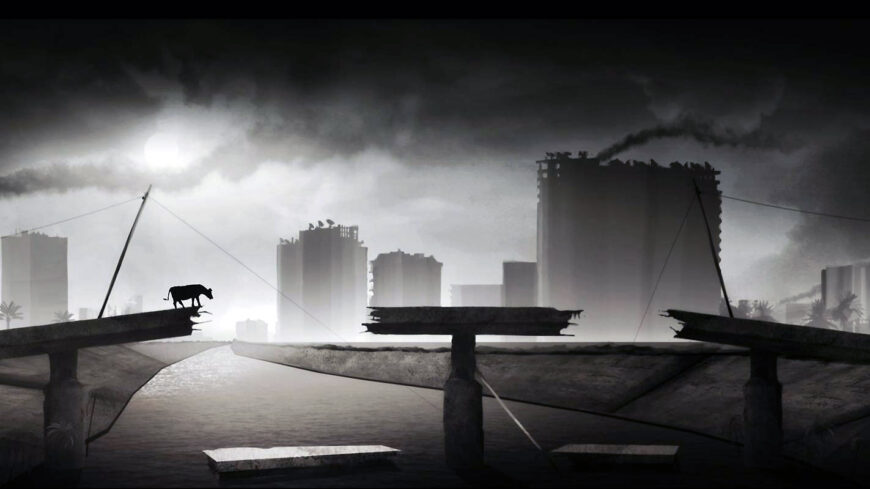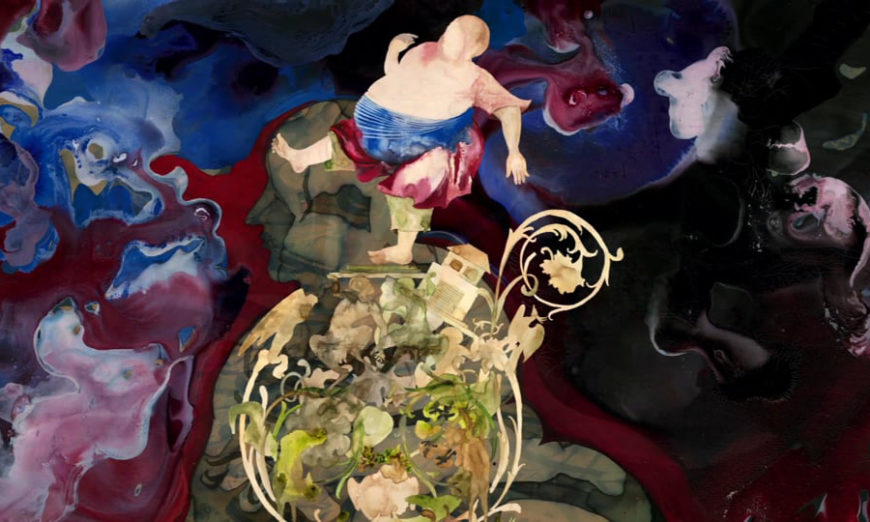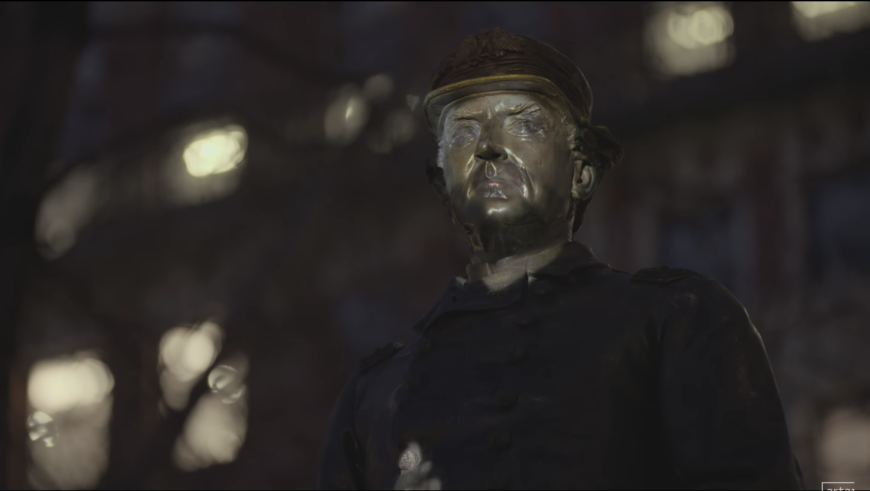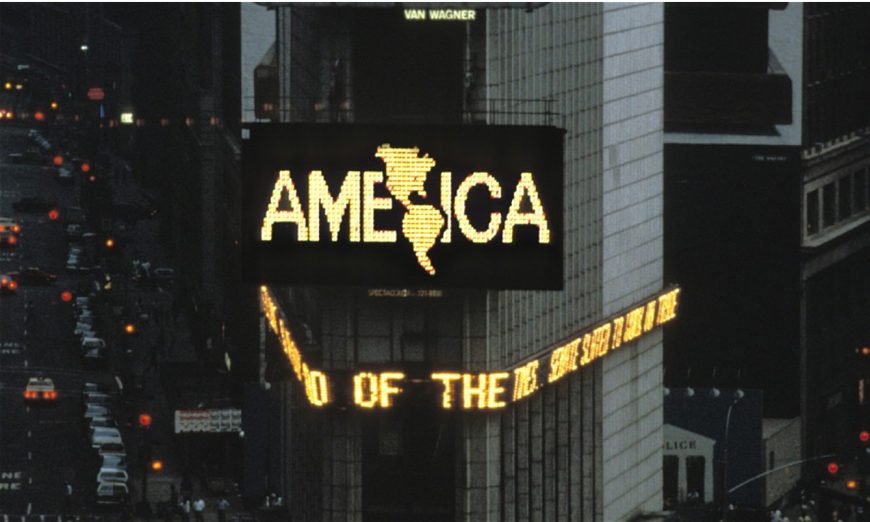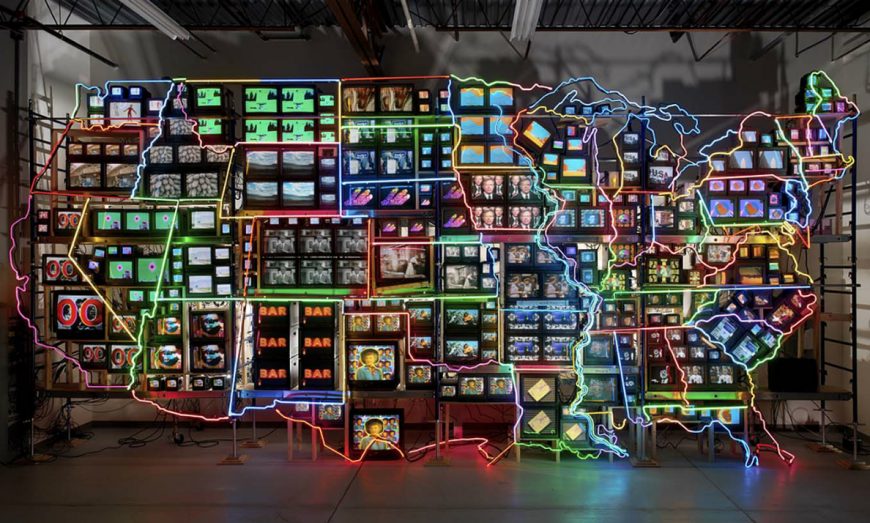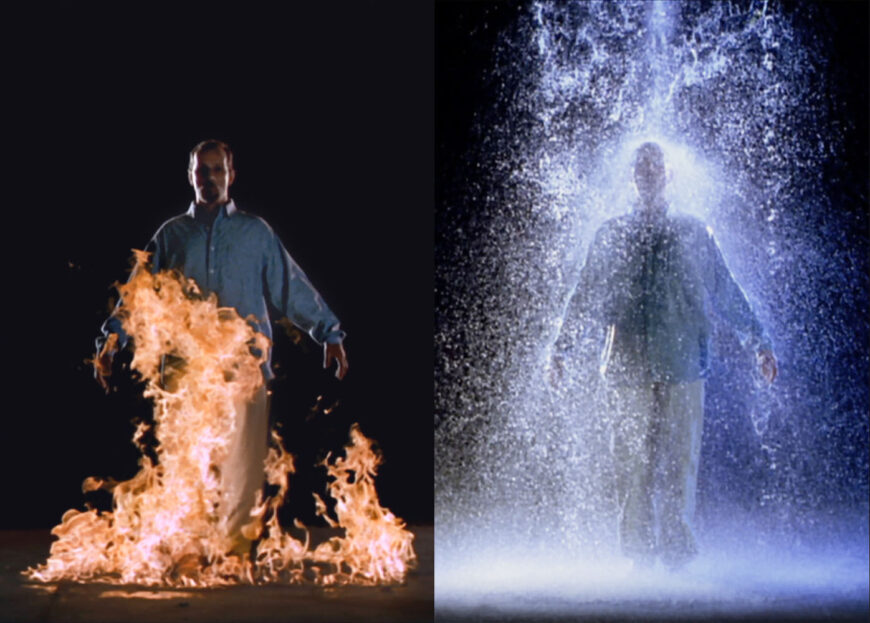
Ahilapalapa Rands, still from Lift Off demo, 2018, single channel digital video (photo: courtesy of the artist) © Ahilapalapa Rands
If you could use your imagination to change something about today, what would it be? This provocation is a simple one, to use that part of our brain that we have been working since we were children, your imagination. However, sometimes we are so deeply embedded in our everyday lives it can be difficult to imagine something different because we are resigned to what exists right now in front of us. Imagination is a core element of Ahilapalapa Rands’ 2018 artwork Lift Off.
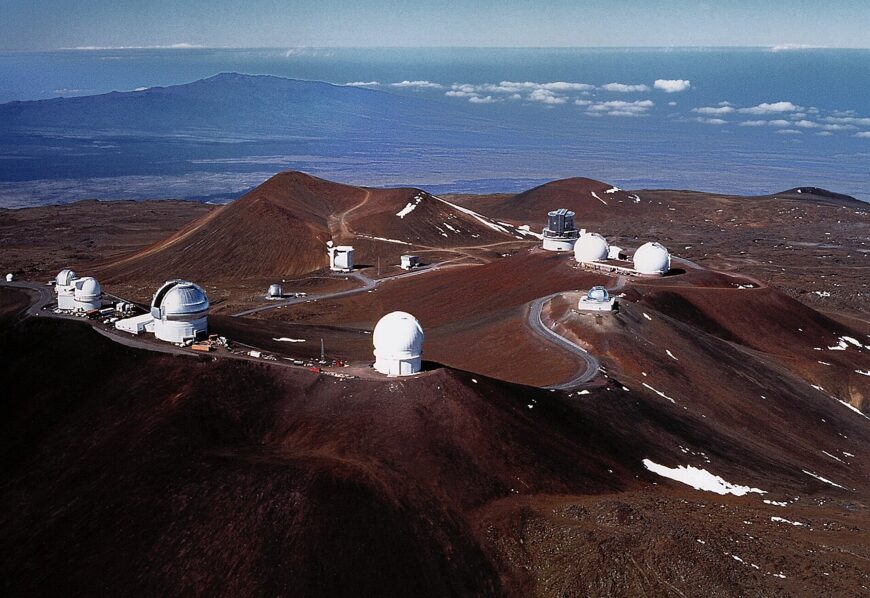
National Optical-Infrared Astronomy Research Laboratory, aerial view of Maunakea, 2020 (photo: Richard Wainscoat and the Gemini Observatory, CC BY 4.0)
Reclaiming a sacred place
Lift Off includes a three-channel film that lasts for three minutes and 25 seconds, with two channels showing satellite footage of Maunakea, a dormant volcano on Hawaiʻi Island. [1] The culturally significant mauna (mountain) is a whopping 4,207 meters above sea level, which makes it one of the highest peaks on earth. For Native Hawaiians Maunakea is known as being home to Wākea, the sky god, and is a wahi kapu or sacred place, hosting significant environmental features like Lake Waiau, one of the highest lakes in the United States, and the burial site Puʻu Mākanaka. Maunakea is also significant to astronomers. Since the 1960s, they have noted the value of the mauna’s elevation for astronomy and have built telescopes on the summit. These telescopes also feature in Rand’s Lift Off until they gyrate their way into oblivion.

Kumu Hula (detail), Ahilapalapa Rands, Lift Off, film installed at Bernice Pauahi Bishop Museum, 2022 (photo: courtesy of the artist) © Ahilapalapa Rands
In the third channel of the video, and also sitting on the mauna, is an animated Kumu Hula (master hula teacher) who plays a beat recorded by Rand’s own Kumu Hula, Auliʻi Mitchell (and remastered by Nikolai Mahina). The Kumu Hula sits the full height of the projection, with her hair creating its own mountainous shape that nearly fills rest of the screen. The telescopes pale in comparison to her stature as she takes up space reclaiming her mauna. The ‘ike, or Indigenous knowledge, held and played by the Kumu Hula in the form of an ipu (gourd percussion instrument) is as significant as the wahi kapu of Maunakea. It’s fitting that to her beat the telescopes in the video begin to hula themselves and before long they explode off Maunakea, leaving our view of the summit free from intrusion, something that people have not seen since the late 1960s. It is Indigenous knowledge that Rands offers as a solution to “lift off.”
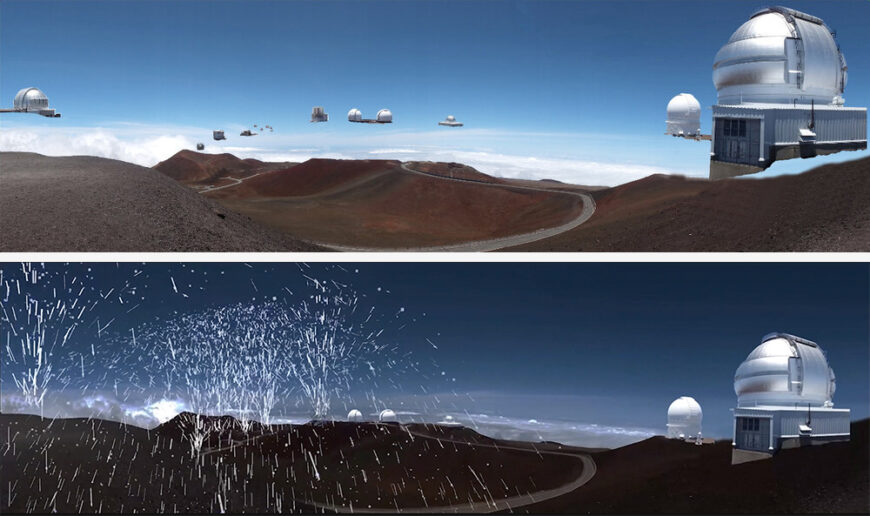
Ahilapalapa Rands, stills from Lift Off demo, 2018, single channel digital video (photos: courtesy of the artist) © Ahilapalapa Rands
The vision of Maunakea clear of telescopes (see below) is especially prescient considering the long protest against the construction of the Thirty Meter Telescope (TMT) proposed for Maunakea which would be its largest yet. While resistance to the use of the site as an observatory has always existed, images of high-profile protests spread globally particularly in 2014, 2015, and again in 2018 and 2019. People flocked to the mauna to help protect it, but for Native Hawaiians in diaspora physically turning up isn’t always so easy, as was the case for Rands. In 2018, Rands was living in London, and there she used her skills as an artist both in terms of making work but also in terms of imagining and envisioning. Envisioning a summit free from telescopes, where the telescopes themselves are removed through the Indigenous knowledge of hula projects an Indigenous future for Maunakea. Lift Off art offers a long-term vision of the goal of political activism. It creates an optimism that can be hard to hold onto in everyday clashes.

Installation with tinsel wall at left (detail), Ahilapalapa Rands, Lift Off, installed at Bernice Pauahi Bishop Museum, 2022 (photo: Christopher Rohrer, courtesy of Hawaiʻi Contemporary and the artist) © Ahilapalapa Rands
There is a final component to Lift Off, which is a five-layer blue and silver tinsel wall that moves and flickers as the audience moves or when no one is there, to the breeze of the air conditioner. The presence of tinsel suggests a festive atmosphere and connects to a feeling of enjoyment present throughout the work. It also references the glistening of light or the spray of water in the ocean or lakes or even as it falls from the sky as rain. Andrea Low’s essay about Rands’s 2024 solo exhibition called Across the Sea, noted that the title comes from their shared kupuna (ancestor) Ernest Kaleihoku Kaai’s song of the same name. The song and exhibition also point to being in diaspora across the sea from Hawaiʻi. Perhaps the glistening sea wall made of tinsel in the above installation image of Lift Off is also a reference to Rands herself being “across the sea” in London when she made that work and in Aotearoa where she grew up and now lives. But being across the sea doesn’t mean one can’t participate in grounded protest movements and Indigenous expressions. As Andrea Low writes: “Activism and art have always gone together and in the turmoil of our contemporary world, with the aid of digital and social media distribution networks, popular forms of protest are multiplying and providing important means of resistance and assertions of Indigeneity.” [2]

Still showing Maunakea with no telescopes. Ahilapalapa Rands, still from Lift Off demo, 2018, single channel digital video (photo: courtesy of the artist) © Ahilapalapa Rands
While Rands couldn’t have known it, at the time she was envisioning Maunakea free of telescopes, in May 2024, the first telescope was removed from Maunakea. While plans to construct the TMT are still moving forward, part of doing so includes the decommissioning of University of Hawaiʻi at Hilo’s Hōkū Keʻa Observatory built by the U.S. Air force in 1968. An additional four telescopes will also be decommissioned and land restored by the time that the TMT is operational. So, while the vision of a telescope-free Maunakea is not yet fulfilled, the presence of telescopes has reduced since Rands’s imagining of an Indigenous future.
About the artist
Ahilapalapa Rands is a multidisciplinary artist of Kānaka Maoli/Indigenous Hawaiian, iTaukei/Indigenous Fijian, Pākehā/ Settler European descent who lives and works in Aotearoa New Zealand. Rands is known for her collaborative work establishing a variety of art collectives including as founding member of New Zealand based art collective D.A.N.C.E. art club alongside Vaimaila Urale, Tuafale Tanoa’i aka Linda T, and Chris Fitzgerald and London based In*ter*is*land Collective alongside Lyall Hakaraia, Jo Walsh and Jessica Palalagi. She is also co-founder of Moana Fresh, a marketplace and community space celebrating Pacific and Māori artists, creatives and authors indigenous to Moana Nui a Kiwa.


